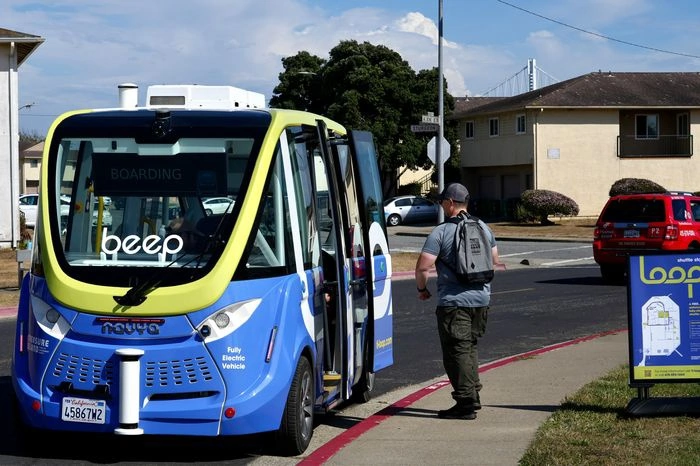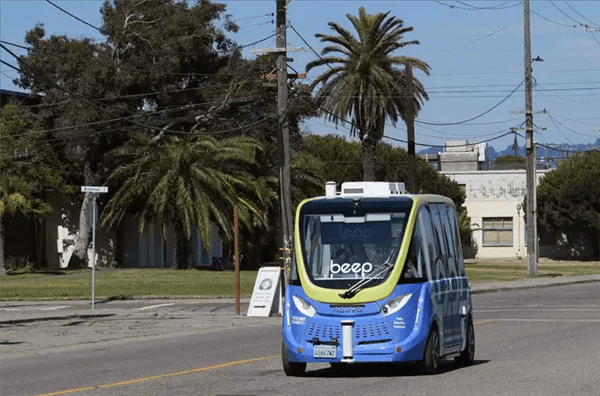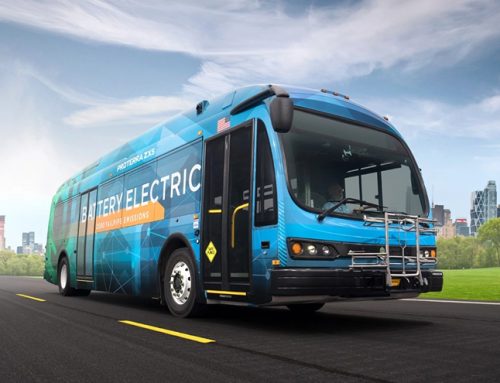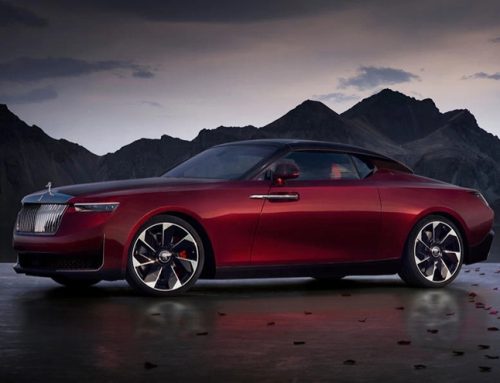In 2023, San Francisco launches driverless bus service

San Francisco launches driverless bus service
San Francisco has launched a driverless bus service without a steering wheel inside.
Earlier this month, after the self-driving taxis of General Motors subsidiary Cruise and Google subsidiary Waymo were approved to operate in San Francisco, there were a series of accidents, which led to the emergency revoking of their operating qualifications by the local government.
On August 20th, San Francisco launched a self-driving bus service less than a week after approving the expansion of self-driving taxis.
The free bus service will run a regular route around Treasure Island in the middle of San Francisco Bay, connecting residential areas, shops and community centers on the island, home to about 2,000 people.
The service is a pilot project to assess how driverless vehicles could complement public transport systems.
The all-electric driverless bus does not have a driver’s seat or steering wheel, but does have an attendant who can steer the bus with a hand-held controller if necessary.
The boxy shuttle can hold up to 10 passengers and operates between 9am and 6pm, making a circuit every 20 minutes.
There are two driverless buses in total, one transporting passengers and the other charging.

The operator of the driverless buses is Beep
The operator of the driverless buses is Beep, an Orlando, Fla.-based company that has launched similar pilot programs in more than a dozen U.S. communities.
Shelley Caran, the company’s project manager, said: “These driverless buses are suitable for short-distance shuttle routes, not to replace the public transport system.
Driverless vehicles have better reaction times than humans and can provide more reliable service because they No distractions.”
During Wednesday’s test ride, the self-driving bus drove at a slow and cautious pace.
When a utility vehicle took up part of the road, the attendant manually took control of the vehicle.
San Francisco is one of a growing number of cities around the world testing the safety and potential of driverless vehicles that promise to change the face of public transportation.
But at the same time, the city has raised questions about the expansion of driverless taxis.
Last week, the California Public Utilities Commission voted to allow two rival driverless taxi companies, Cruise and Waymo, to offer round-the-clock passenger service in San Francisco, according to previous reports.
But the decision has been met with skepticism by many, who believe that driverless taxis will cause unplanned stops, traffic jams and impede emergency vehicles.
On Wednesday, the city asked the commission to suspend the expansion of driverless taxis.
Experts believe the same problem is unlikely to arise with driverless buses because they are expected to have a driver or attendant even with added automation.
Driverless technology may make buses safer, but requiring drivers or attendants could undercut one of their potential advantages: lower labor costs.
Allowing driverless taxis to operate has always been a huge controversy in the United States, and previous congestion accidents have sparked a war of public opinion.
Proponents argue that robo-taxi services are more reliable, convenient and less expensive.
Opponents believe that this technology has huge risks and is an invisible threat.
The San Francisco Fire Department confirmed to CNN that as of last week, self-driving cars have caused at least 55 traffic accidents in 2023, putting “great pressure” on the local police department and fire department.







Leave A Comment